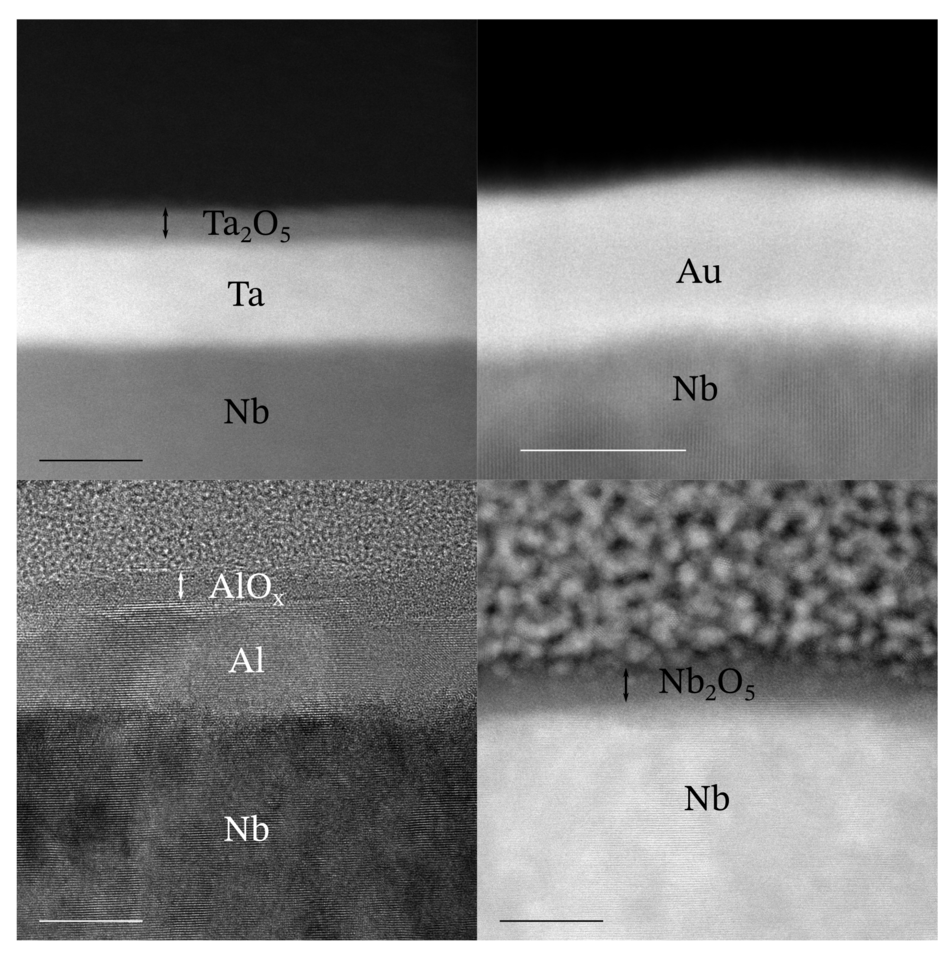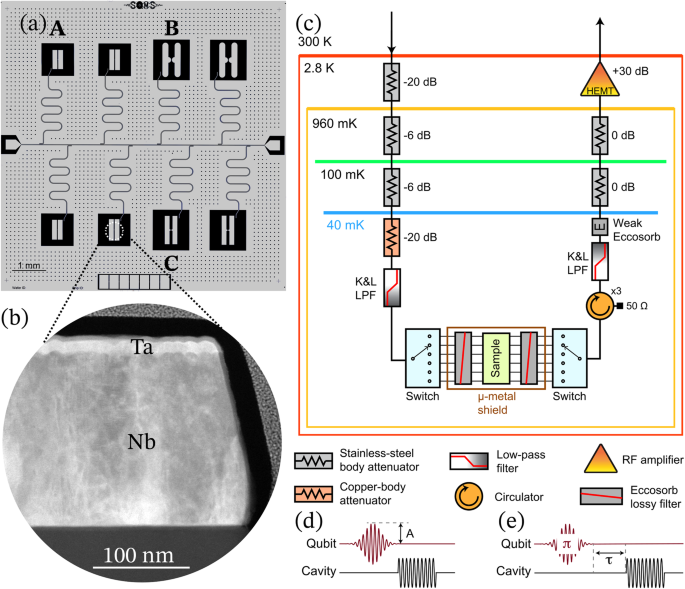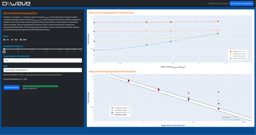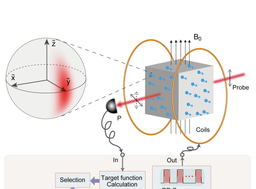Saving qubits from lossy oxides

Quantum devices such as qubits are critical for storing and manipulating quantum information. The qubit lifespan, known as coherence time, determines how long data can be stored and processed before an error occurs. This phenomenon, called quantum decoherence, is a critical obstacle to operating quantum processors and sensors.
At the Superconducting Quantum Materials and Systems Center, hosted by the U.S. Department of Energy’s Fermi National Accelerator Laboratory, we are focusing on solving the decoherence challenge. By tackling the problem at the material level, in the work presented in this paper we have achieved a significant result: reproducible improvements in coherence times, up to record values of 0.6 milliseconds in superconducting transmon qubits. The results were achieved by exploring innovative materials that eliminated a major source of losses in these devices.
Our researchers worked across academic and commercial qubit foundries, achieving this new milestone by developing a technique called ‘surface encapsulation.’ The novel process protects key layers of the qubit during fabrication and prevents the formation of lossy materials at the surfaces and interfaces of these devices. By carefully investigating and comparing various materials and deposition techniques, SQMS researchers have studied alternative oxides that lead to higher qubit lifetimes and lower “two-level-system losses (TLS).”
SQMS scientists’ systematic, in-depth study of the hierarchy of losses in transmon qubits pointed to the niobium surface as the primary culprit in these qubits. In the presence of air these qubits oxidize, resulting in a few nanometer thick niobium native oxide, which limits performance by shortening coherence times.
Prior measurements from our group had indicated that niobium is the best superconductor for these qubits. While the metal losses are near zero, the niobium surface oxide is problematic and the main driver of TLS losses in these circuits.
SQMS scientists had the idea of encapsulating the niobium during the qubit fabrication and before being exposed to air, to prevent oxide formation. While we had a hypothesis on which materials would work best for encapsulation, determining the optimal material required a detailed study. So, we systematically tested this technique with different materials, including aluminum, tantalum, titanium nitride, and gold.
With each capping layer attempt, we analyzed the materials with several advanced characterization techniques such as time-of-flight secondary ion mass spectrometry (ToF-SIMS), x-ray photoelectron spectroscopy (XPS), transmission electron microscopy (TEM) at material science labs at Fermilab, Ames National Lab, Northwestern University and Temple University. Qubit performance was measured at dilution fridge temperatures, and the results demonstrated that we could prepare qubits with 2 to 5 times coherence improvement compared to samples prepared without a capping layer (containing the niobium native oxide layer). Our team found that the material encapsulation process systematically improved coherence times for all materials explored in the study.
When fabricating a qubit, there are many variables, more or less hidden, that can impact performance. This is a first-of-its-kind study that very carefully compares one material change and one process change at a time, on a chip of a fixed geometry, across different fabrication facilities, to ensure that we develop reproducible techniques for improvement in qubit performance.
The teams fabricated and tested qubits in different facilities as part of the SQMS Center National Nanofabrication Taskforce. Fermilab led the way, making qubits at the Pritzker Nanofabrication Facility at the University of Chicago. Other facilities included Rigetti Computing, a quantum computing company with a quantum foundry, and the National Institute of Standards and Technology (NIST) Boulder Laboratories. Both institutions are core partners in the SQMS collaboration. Fabricating the chip at Rigetti’s commercial foundry on silicon substrates also showed more than two times improvements in coherence, and proved that the technique is easily reproducible by industry.
Following this work, SQMS researchers continue to push qubits’ performance frontier further. The next steps include engineering creative and robust nanofabrication solutions for applying this technique to other transmon qubit surfaces to eliminate all amorphous lossy interfaces present in these devices. The underlying substrate upon which these qubits are prepared, such as silicon or sapphire wafers, represents the next major source of losses as well. SQMS researchers are already hard at work characterizing and developing better silicon wafers or other types of lower-loss substrates suitable for quantum applications.
Moreover, SQMS scientists are already working to ensure that these coherence advances can be preserved in more complex chip architectures with several interconnected qubits. Working hand in hand with industry will ensure a fast tech transfer process, with breakthroughs from research labs transitioning directly to commercial products.
This blog post was prepared in collaboration with Hannah Adams, Akshay Murthy and Emily Ayshford.
The Superconducting Quantum Materials and Systems Center is one of the five U.S. Department of Energy National Quantum Information Science Research Centers. Led by Fermi National Accelerator Laboratory, SQMS is a collaboration of more than 30 partner institutions — national labs, academia and industry — working together to bring transformational advances in the field of quantum information science. The center leverages Fermilab’s expertise in building complex particle accelerators to engineer multiqubit quantum processor platforms based on state-of-the-art qubits and superconducting technologies. Working hand in hand with embedded industry partners, SQMS will build a quantum computer and new quantum sensors at Fermilab, which will open unprecedented computational opportunities. For more information, please visit sqmscenter.fnal.gov.
Follow the Topic
-
npj Quantum Information

The scope of this journal spans across all relevant disciplines, fields, approaches and levels and so considers outstanding work ranging from fundamental research to applications and technologies.
Related Collections
With Collections, you can get published faster and increase your visibility.
Algorithms, Protocols and Architectures for Early Fault Tolerance
Publishing Model: Open Access
Deadline: Jun 25, 2026
Quantum-Enabled Bioimaging
Publishing Model: Open Access
Deadline: May 04, 2026




Please sign in or register for FREE
If you are a registered user on Research Communities by Springer Nature, please sign in